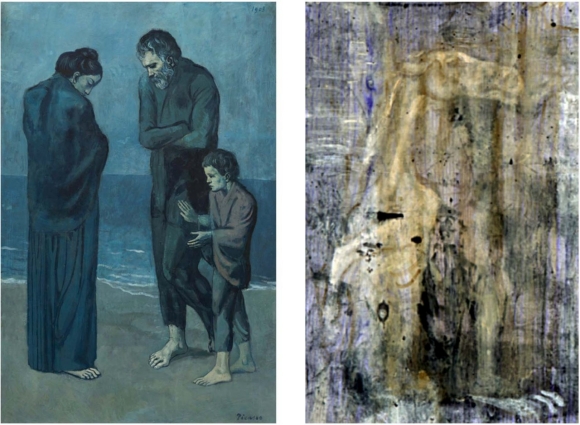Use of Hyperspectral Infrared Imaging to Study Picasso's “The Tragedy”
Picasso appears to have used the panel to sketch and paint out other compositions reminiscent of earlier works.

Left: Color Image of Picasso’s Tragedy (1901). Right: Transform image from hypserspectral Infrared Image Cube showing outline drawing and changes made to the final composition which can be seen at wavelengths close to visible light.
Bullfight Images, 1901
Infrared Images in the 1300 to 1500 nm region reveal an elongated, tortured horse at the lower right-hand corner. In addition to the horse, one can identify the outline of the bullring and the arches of the stadium (not shown) . These images clearly related to Picasso’s 1901 bullfight scenes, suggest that he painted a large bullfight composition on this wooden support.

Left: Color Image of Picasso’s Tragedy (1901). (Right) False color hyperpsectral image.
Random Sketches, 1899
Imaging further into the infrared reveals randomly placed sketches, caricatures, and lettering beneath the paint, which appear to have been drawn hastily, directly on the wood support. The elongated faces and the grouping of the drawings are reminiscent of those in Picasso's 1899 sketchbooks, suggesting that the panel was in his studio for four years before he completed The Tragedy.

Left: Color Image of Picasso’s Tragedy (1901). (Right) False color hyperpsectral image.
Conservation Division
National Gallery of Art
2000B South Club Drive
Landover, MD 20785
[email protected]